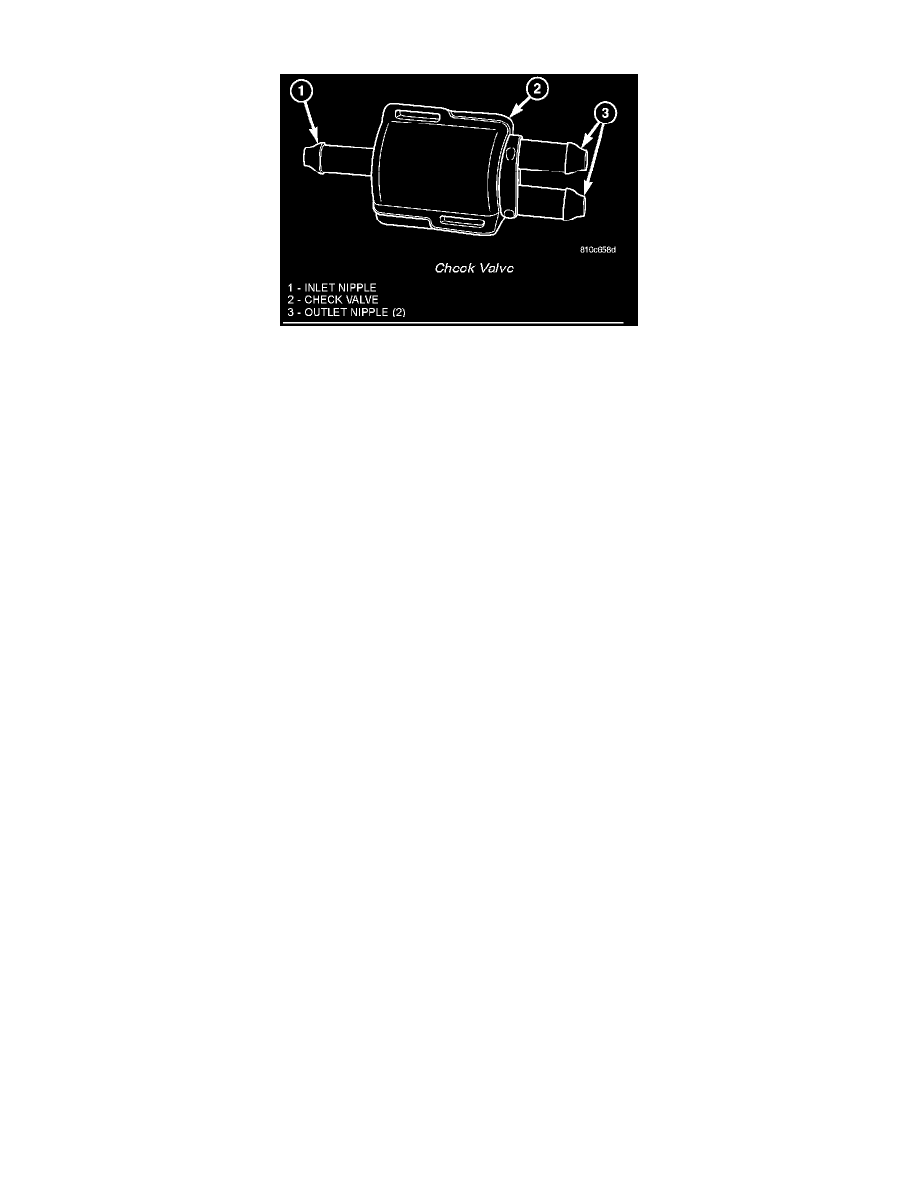Sprinter 2500 L5-2.7L DSL Turbo (2003)

Check Valve: Description and Operation
Check Valve
A single washer system check valve is standard equipment on this model, and is installed in the washer system plumbing. The check valve is integral to
the washer plumbing fitting located on the underside of the cowl top panel behind the rear of the hood panel opening in the engine compartment. The
check valve consists of a molded plastic body with three barbed hose nipples, one at the inlet side of the valve body and two at the outlet side. The check
valve cannot be adjusted or repaired and, if faulty or damaged, it must be replaced.
The check valve provides more than one function in this application. It serves as a plumbing connector fitting between the engine compartment and
washer nozzle sections of the washer supply hose. It prevents washer fluid from draining out of the washer supply hoses back to the washer reservoir.
This drain-back would result in a lengthy delay from when the washer switch is actuated until washer fluid was dispensed through the washer nozzles,
because the washer pump would have to refill the washer plumbing from the reservoir to the nozzles. Such a drain-back condition could also result in
water, dirt, or other outside contaminants being siphoned into the washer system through the washer nozzle orifice. This water could subsequently freeze
and plug the nozzle, while other contaminants could interfere with proper nozzle operation and cause improper nozzle spray patterns. In addition, the
check valve prevents washer fluid from siphoning through the washer nozzles after the washer system is turned Off.
When the washer pump pressurizes and pumps washer fluid from the reservoir through the washer plumbing, the fluid pressure unseats a diaphragm from
over a sump well within the valve by overriding the spring pressure applied to it by a piston. With the diaphragm unseated, washer fluid is allowed to
flow toward the two washer nozzles. When the washer pump stops operating, the spring pressure on the piston seats the diaphragm over the sump well in
the valve and fluid flow in either direction within the washer plumbing is prevented. The check valve cannot be adjusted or repaired and, if faulty or
damaged, it must be replaced.
